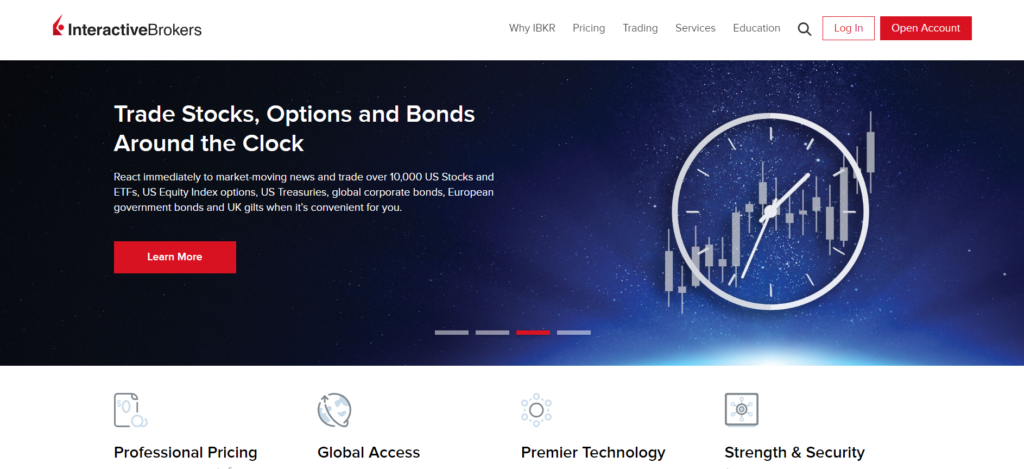Fractional shares are portions of a company’s equity that represent less than one full share. They arise in various situations such as stock splits, dividend reinvestment plans (DRIPs), mergers, and acquisitions. While fractional shares carry value, they do not typically trade on the open market. Instead, investors often rely on brokerage firms to buy or sell them.
In this article, we’ll explore what fractional shares are, how they are created, and how investors can buy and sell them effectively.
What Are Fractional Shares?
A fractional share is a fraction of a full share of stock, meaning an investor owns less than one full share of a company. Fractional shares often arise when events such as stock splits, mergers, or dividend reinvestment plans occur. Unlike whole shares, fractional shares don’t trade freely on stock exchanges. They are typically bought and sold through brokerages that combine fractional shares to form whole ones.
How Are Fractional Shares Created?
Several corporate actions and investment strategies can lead to fractional shares. The most common ways include:
1. Stock Splits
A stock split increases the number of a company’s shares while maintaining the same overall market capitalization. For example, in a 3-for-2 stock split, every two shares an investor owns are converted into three shares. This uneven division often results in fractional shares. For instance, if an investor owns 5 shares, after a 3-for-2 split, they would end up with 7.5 shares.
2. Dividend Reinvestment Plans (DRIPs)
DRIPs allow investors to reinvest their dividend payouts into additional shares of stock, rather than receiving cash. Since the dividend amount may not be enough to buy a full share, it is instead used to purchase a fraction of a share. Over time, this can accumulate into significant holdings, despite initially only representing fractions of shares.
3. Mergers and Acquisitions
During mergers or acquisitions, companies may combine shares at a predetermined ratio, which doesn’t always result in whole shares. For example, a shareholder might receive 0.75 shares of the acquiring company for every share they hold in the original company, leading to fractional shares.
4. Brokerage-Driven Fractions
Some brokerage firms deliberately divide full shares into fractional parts to make high-priced stocks more accessible to investors. For example, stocks like Amazon (AMZN) or Alphabet (GOOGL) are often split into fractions, enabling individual investors with smaller budgets to buy portions of these expensive shares.
How to Buy Fractional Shares

1. Through Major Brokerages
Several major brokerage firms, like Interactive Brokers and Fidelity, offer fractional share trading. These brokers allow investors to purchase fractions of a stock, rather than requiring them to buy whole shares. This enables investors with limited capital to access high-priced stocks that might otherwise be out of reach. For example, instead of needing over $1,000 to buy a full share of Amazon, an investor can use $300 to purchase one-third of a share.
2. Dividend Reinvestment Plans (DRIPs)
Investors can participate in DRIPs offered by certain companies or brokers. In a DRIP, dividend payments are automatically reinvested to buy additional shares, often resulting in fractional shares. This method allows investors to steadily increase their stock holdings over time without needing to make large lump-sum investments.
3. Dollar-Cost Averaging
Some investment strategies, like dollar-cost averaging, enable investors to invest a fixed amount of money regularly, regardless of the stock price. As a result, investors can accumulate fractional shares over time as they continuously buy portions of shares at varying prices.
How to Sell Fractional Shares
1. Through Your Brokerage
The primary way to sell fractional shares is by working through the brokerage that helped you acquire them. Major brokers will often combine multiple investors’ fractional shares to create whole shares, which can then be sold in the market.
2. Combining Fractional Shares
If you want to sell your fractional shares, you may also have the option of purchasing additional fractions to make up a whole share. This way, you can sell the entire share instead of trying to find a buyer for the fractional portion.
3. Cash in Lieu of Fractional Shares
In some cases, especially after corporate actions like mergers or acquisitions, companies might offer investors cash instead of fractional shares. This is known as “cash in lieu.” The cash amount is based on the market value of the fractional shares.
Advantages of Fractional Shares
1. Accessibility to High-Priced Stocks
Fractional shares make it easier for investors to own portions of expensive stocks that they otherwise couldn’t afford. This opens up opportunities for people with smaller budgets to invest in prominent companies like Amazon or Alphabet.
2. Improved Portfolio Diversification
Fractional shares allow investors to spread their money across multiple stocks and industries, even if they don’t have the capital to buy full shares of every company they’re interested in. This helps in building a diversified portfolio and mitigating risk.
3. Reinvesting Dividends Efficiently
DRIPs and other programs that allow for the automatic reinvestment of dividends make fractional shares a convenient way to compound investments over time, maximizing potential returns without having to make additional deposits.
Disadvantages of Fractional Shares
1. Limited Liquidity
Unlike whole shares, fractional shares do not trade on the open market, which can make them harder to sell. Investors must rely on brokerages to combine their fractional shares with others to sell them, which can take time and might be less efficient.
2. Potential Transaction Delays
Selling fractional shares may take longer than selling full shares, especially if the demand for the underlying stock is low. Investors may face delays as their broker works to find enough buyers for the fractional shares.
3. Limited Voting Rights
In many cases, fractional shareholders do not have the same voting rights as full shareholders. This means they may not have a say in corporate decisions that full shareholders are allowed to vote on.
Real-World Examples of Fractional Shares

Interactive Brokers became the first major online brokerage to offer fractional share trading in November 2019. In January 2020, Fidelity followed suit by launching fractional share trading for equities and ETFs. These moves have made it easier for everyday investors to access high-priced stocks and build diversified portfolios without needing large sums of money upfront.
Conclusion
Fractional shares offer an innovative way for investors to participate in the stock market, especially when they don’t have the capital to buy whole shares of expensive stocks. While they provide greater accessibility and help with portfolio diversification, they do come with some limitations, including restricted liquidity and reduced voting rights.
By using brokerages that support fractional trading, participating in DRIPs, or leveraging dollar-cost averaging strategies, investors can make the most of fractional shares and take advantage of investment opportunities that may otherwise have been beyond their reach.
So that is it about this article if you have any thing further in mind, comment down below or contact finzerr. We are always here to help you!
FAQs
1. What is a fractional share?
A fractional share is a portion of a full share of a company’s stock, representing less than one full share. These shares can result from stock splits, dividend reinvestment plans (DRIPs), or mergers.
2. How are fractional shares created?
Fractional shares are created through stock splits, dividend reinvestment plans, mergers, and acquisitions. Some brokers also intentionally divide whole shares to make high-priced stocks more accessible to investors.
3. Can I buy fractional shares?
Yes, many major brokerage firms, such as Fidelity and Interactive Brokers, allow investors to buy fractional shares of stocks, making it easier to invest in expensive companies like Amazon or Alphabet.
4. How can I sell fractional shares?
Fractional shares can be sold through your brokerage firm. Brokerages will typically combine fractional shares from multiple investors to create whole shares, which can then be sold in the market.
5. What are the advantages of owning fractional shares?
Fractional shares provide greater access to high-priced stocks, improve portfolio diversification, and allow investors to efficiently reinvest dividends without needing large sums of money.
6. What are the disadvantages of owning fractional shares?
The disadvantages include limited liquidity, potential transaction delays, and in many cases, fractional shareholders have limited or no voting rights compared to full shareholders.
7. Can I receive cash instead of fractional shares?
Yes, in certain cases like mergers or acquisitions, investors might receive cash in lieu of fractional shares. The cash amount is usually based on the market value of the fractional shares.
8. Do fractional shares have voting rights?
In most cases, fractional shareholders do not have the same voting rights as those holding whole shares. The level of voting rights depends on the policies of the specific brokerage or company.
9. How do dividend reinvestment plans (DRIPs) lead to fractional shares?
DRIPs allow dividends to be reinvested automatically into additional shares, which can result in fractional shares when the dividend amount is less than the price of a full share.
10. What is the best way to buy fractional shares?
The best way to buy fractional shares is through major brokerage firms that offer fractional trading. This allows you to invest in expensive stocks with smaller amounts of money.



